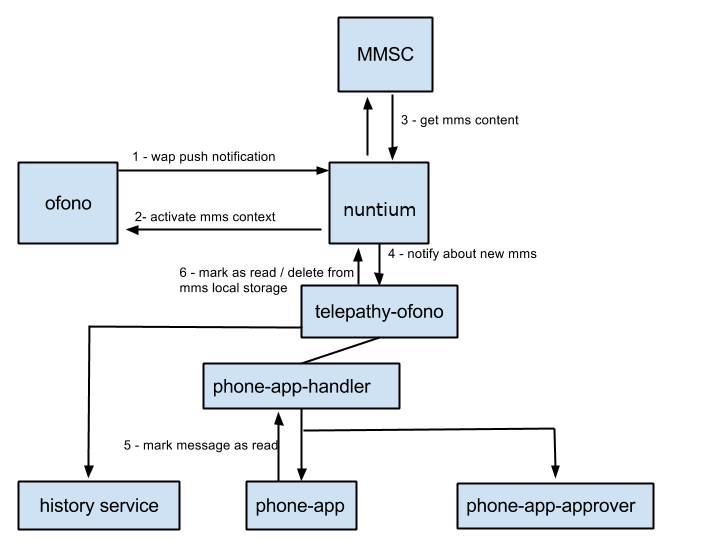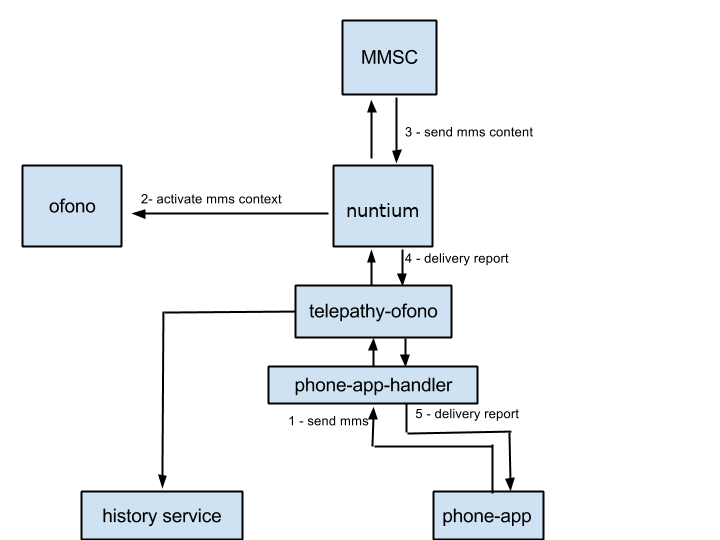MMS infrastructure components#
oFono - responsible for providing the data context used to transfer MMS data (image/music). It also propagates wap push notifications to upper layers.
nuntium - daemon that listens to wap push notifications and activates the MMS data context on ofono on demand to send/receive MMS’s. It provides a local store.
telepathy-ofono - talks to nuntium through dbus and is used to both relay messages from phone-app to nuntium and inject into the telepathy infrastructure MMS’s received by nuntium as multi-part messages. This component also marks messages as read and delete successfully received messages from nuntium.
history-service - this component watches the telepathy communication and store the messages received by telepathy-ofono or sent by messaging-app.
telephony-service-approver - this component is in charge of adding SMS’s to the messaging menu and to display incoming text notifications.
messaging-app - It renders MMS’s in the conversation view and also provides a way to attach media files to a message in order to send an MMS.
General Description#
Incoming MMS#
An MMS WAP push notification is received by ofono and propagated to nuntium
nuntium enables the MMS context in ofono, retrieves the content from MMSC and propagates the new MMS to upper layers.
A new MMS arrives at telepathy-ofono.
If automatic retrieval is not enabled or not available at the moment, a control message is sent to the app
messaging-app request the retrieval of the message to telepathy-ofono.
After the message is retrieved from MMSC, it is delivered to the apps via normal text channel in a multi-part message (one text/html part, one text/plain part and one part per attachment). If the control message was previously delivered, this real message have a flag telling it is a replacement for the previous message.
The new message history service saves the attachment parts to disk, and replaces the paths on text/html to point to the new attachment locations. It also saves a flag and the content type.
Outgoing MMS#
messaging-app creates a new text channel in telepathy-ofono, or uses an existing channel.
messaging-app sends the MMS as a multi-part message to telepathy-ofono
nuntium enables the MMS context in ofono, sends the MMS through MMSC and signals the upper layers about the current status (sent, draft).
telepathy-ofono sends signals to applications with delivery reports.
Incoming MMS diagram#

Outgoing MMS diagram#

References#
initial source: https://wiki.ubuntu.com/Touch/Specs/MMSInfrastructure